In today’s world, environmental conservation is a crucial concern. The construction industry has a significant impact on environmental health, as it causes carbon emissions, waste generation and resource consumption. That’s why it’s vital to consider using eco-friendly building materials in construction projects to minimize environmental pollution and promote sustainability.
In this article, we will explore 10 eco-friendly building materials that will contribute to building a more sustainable future. These materials offer numerous benefits, such as renewability, durability, energy efficiency and low carbon footprint, making them ideal construction materials for environmentally conscious builders, architects, and homeowners.
Are you curious to know what are these innovative and sustainable building materials? Let’s dive into the details and learn how they can contribute to greener construction practices for a more sustainable world!
List of Eco-Friendly Materials for Buildings
1. CLT – Cross Laminated Timber
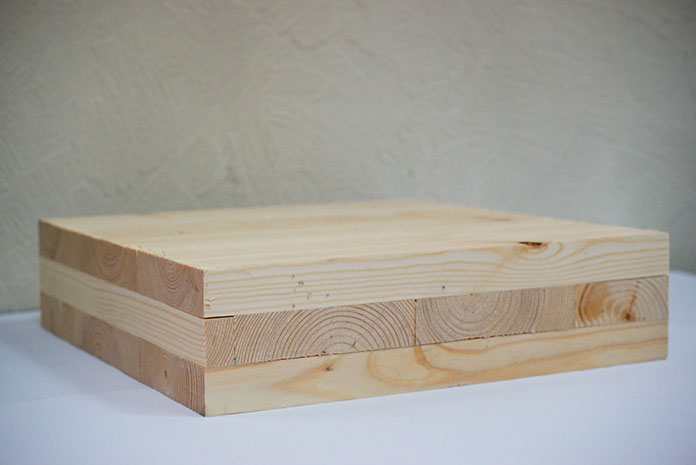
Wood has always been among the most sustainable building materials throughout history. There are valid reasons for the ongoing use of wooden structure material for thousands of years. Some of these reasons are:
- Localness and accessibility of trees, which are the raw materials of timber
- Wood cleans the air by absorbing carbon in the atmosphere
- Simple workmanship and fairly low cost of material
- Less harmful to human health and nature
Speaking of which, you can read our Wooden Structure article in order to get more information about the use of wood in architectural design.
Wood has always been a good choice in construction. However, there are some weaknesses of traditional timber. Scientists researched these cons in the 21st century and they developed a new composite timber material that is more durable, stronger and useful than ordinary timber.
This material called cross-laminated timber (CLT) is basically produced by cutting and gluing wood layers on top of each other with the help of CNC and press machines.
In order for CLT to be resistant to both tensile and pressure, its fibers are placed vertically each other. By this means, cross-laminated timber material has been sustainable alternative building material to wood in the construction field.
2. Cob
Cob is an ecological building material comprised of natural sources such as straw, water and soil. The reason for using straws is that it keeps the soil together and increases its strength.
Frequently used in the local architectural traditions, cob has been one of the main sustainable architectural materials for thousands of years. Since the cob works monolithically, it also functions as a carrier.
Thanks to the components it consists of, the cob also provides natural thermal insulation. By this means, structures using cob don’t need an additional insulation material.
It decreases the costs of heating and cooling. As a result, cob is a good example of energy-efficient green building materials.
Features of cob material at a glance:
- Low carbon footprint
- Low-cost thanks to the local availability of its components
- Good for both human health and environmental health
- High earthquake resistance for single-story structures
- Waterproofing and adaptation to climate conditions
- Sound impermeability thanks to its fibrous structure
- Enables curvilinear walls in architectural design
3. Bamboo
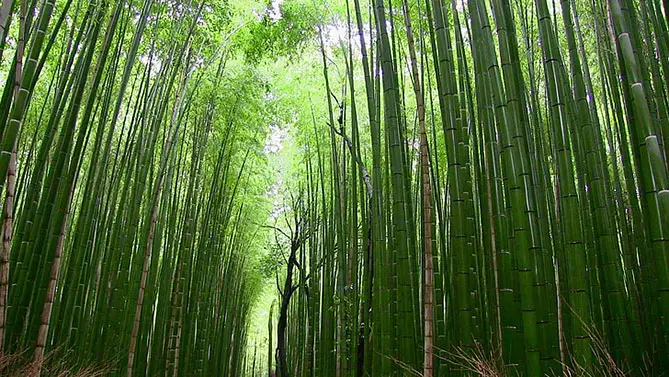
Plants are good sources for the construction industry. However, some special types are more suitable to use in buildings. Bamboo, which is scientifically a durable grass, is one of them.
It’s a versatile and eco-friendly building material that has been used for centuries in construction practices. Growing rapidly, it can be harvested without harming the plant.
Bamboo has gained popularity as a sustainable alternative to traditional building materials due to its various impressive features.
Reaching quite tall heights in just 3-5 years, a bamboo plant provides a %100 renewable building material. The very strong elongation of bamboo fibers in the long direction is what makes bamboo so durable. It also has excellent tensile strength.
Bamboo can be used in a wide range of construction applications, from structural elements to decorative elements. It also can be easily shaped, cut, and treated to fit various design requirements. These features make it a versatile choice for architects and builders.
Features of bamboo at a glance:
- Bamboo is one of the fastest-growing plants on Earth
- Features an ultra-high tensile strength
- Wide range of construction applications
- High carbon emissions that many other plants
4. Stone
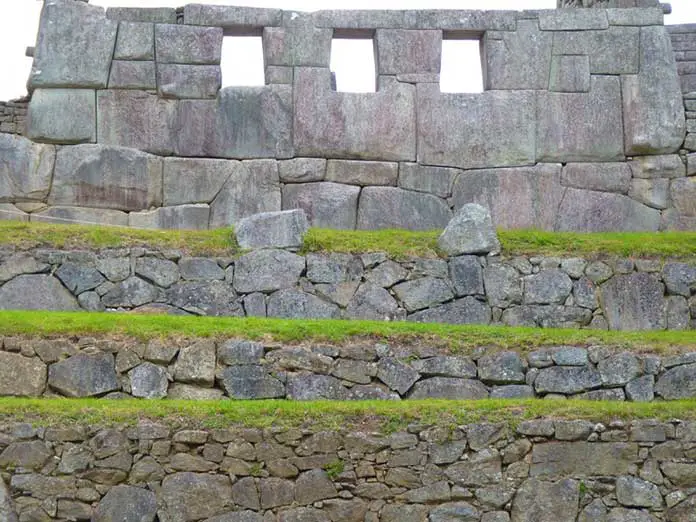
Stone is a natural and sustainable construction material that allows us to design environmentally friendly buildings. Since the old centuries, people had created spaces to inhabit inside of them by putting various stones and rocks on top of each other.
Crafting these primitive spaces, which they created by imitating caves, they built structures getting more and more beautiful looks.
However, stones differ in their formation process and the minerals they include. Some stones are more suitable for the structural system of buildings according to their rigidity level. Some of the others are used as sustainable facade materials for their cellular structure.
Advantages of Stone Used in Buildings
Stone protects interior spaces from the cold and provides a cool spatial atmosphere in summer. Stones also don’t emit any harmful chemical gases and are also highly resistant to fire.
Moreover, additional materials are generally not required when using a type of stone in construction. This reduces the environmental pollution that will occur due to physical or chemical mixtures to zero.
Natural stones are simple, useful and environmentally friendly, as they are often used directly as a building material, without changing their structure.
Features of stone at a glance:
- Wide range of use, from structure to facade cladding
- Fire resistance
- Environmentally friendly
- Easy to use, without additional materials
5. Hempcrete
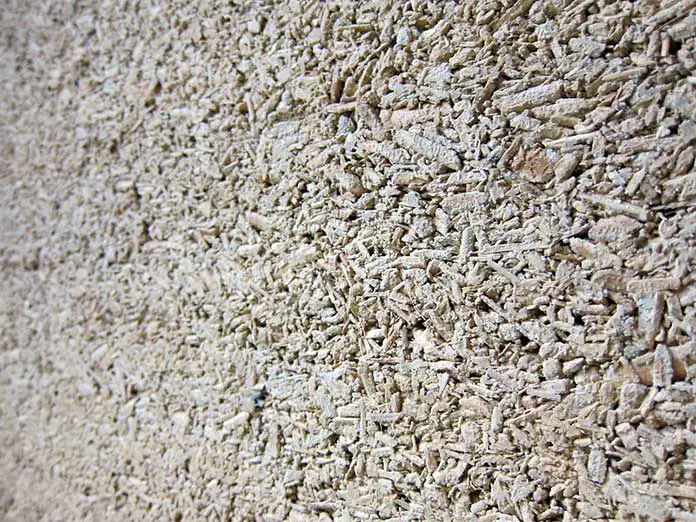
Obtained from a mixture of sand, fibers of the hemp plant and lime, hempcrete is an innovative building material in the construction field. It also provides thermal insulation.
While hempcrete can be used as a panel, it is mostly produced in blocks and used as the core component of walls. These extremely light and effective blocks are held together with mortar-like binding materials.
Although hempcrete is not as durable as concrete, it’s among the eco-friendly green building materials as it doesn’t shrink or crack when dry. Additionally, it provides high fire resistance and soundproofing.
Features of hempcrete at a glance:
- Natural thermal and acoustic insulation
- Renewable
- Fire resistance
- Extremely lightweight
- Produced in panels or blocks
6. Mycelium
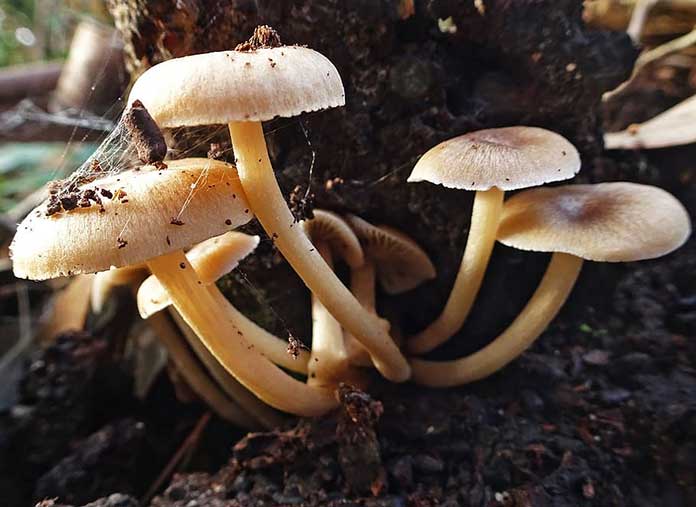
It’s the plant-based fibrous part of a fungus that remains underground. Mycelium can be dried and used as a sustainable material for buildings.
These biodegradable mushroom roots are mostly used for insulation and floor covering. It is among the most sustainable building materials that are candidates to replace plastic in the future.
The most essential characteristics of mycelium are it features fire resistance, heat insulation and water impermeability. Moreover, due to its lightweight, its portability is much easier and cheaper.
Features of mycelium at a glance:
- Bio-based resource
- Low carbon footprint
- Biodegradable
- Fire resistance
- Thermal insulation
7. Clay Brick
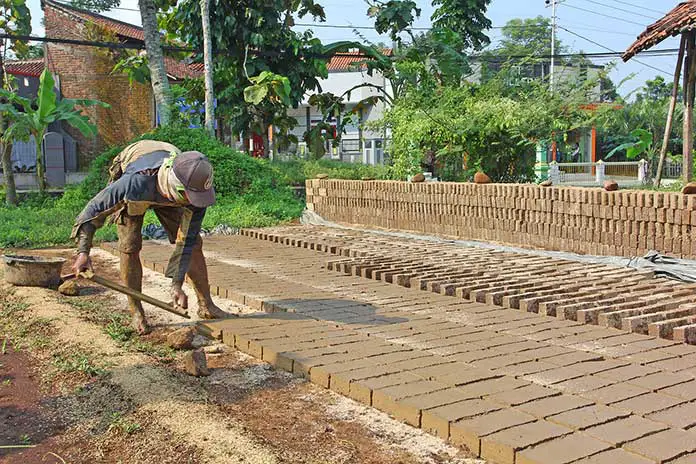
Obtained from stones formed as a result of volcanic eruptions, clay is a green, renewable, eco-friendly and sustainable construction material.
Containing minerals such as limestone, iron oxide and silica, clay is a humid material due to its hydrophilic character.
People have been producing bricks with these kinds of contentful stones and soils since the antique ages. Clay-based brick, on the other hand, is a unique green architectural material that keeps the interior warm in the winter and cool in the summer.
When water is added to the clay, it gains a soft structure that can be easily shaped. This water evaporates quickly due to the flammable compounds it contains. Then, the clay material retains its shape by gaining hardness.
Features of clay brick at a glance:
- Natural resources
- Renewable
- Thermal insulation
- Design flexibility
8. Recyclable Rubber
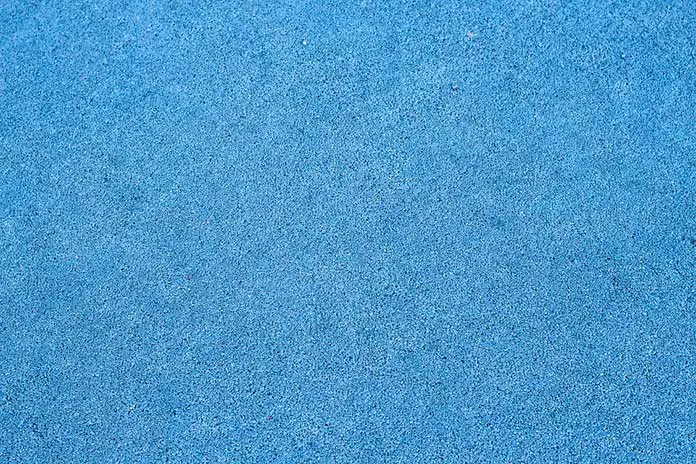
Rubber is produced in two types. The first type is a synthetic rubber, which is produced with petroleum-derived raw materials and is quite harmful to nature. Natural rubber, on the other hand, is obtained from rubber trees and it is more recyclable.
Rubber is very resistant to tearing and pulling. It also has a high elasticity. It’s mostly used in floor coverings in building design and is also preferred on the floors of gyms and walking trails.
Moreover, rubber is used in playgrounds to prevent injuries from falling. The rubber coating, which gives a very soft feeling when you walk on it, is the right choice to meet the soft floor needs of outdoor spaces. However, you should prefer recyclable rubber, not the synthetic one.
Features of natural rubber at a glance:
- Recyclable
- Natural resources like trees
- High elasticity
- Press and tensile strength
- Suitable for soft flooring
9. Newspaper Wood
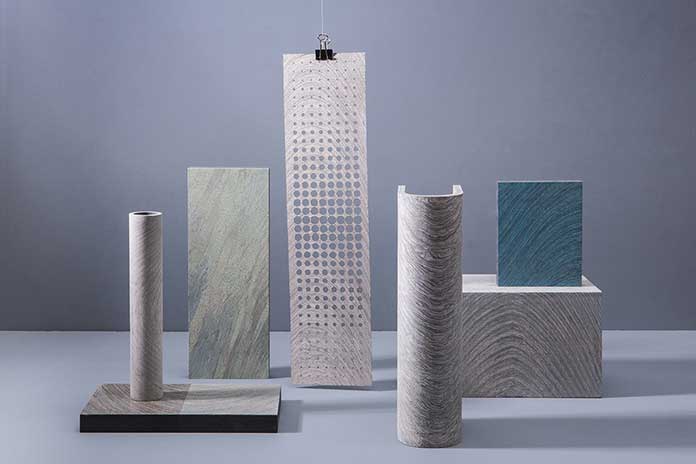
NewspaperWood is a Dutch company founded in 2003. Instead of producing newsprint from wood like in traditional ways, this enterprise reverses the process by converting newsprint into wood.
Since it uses paper as a raw material, NewspaperWood has a low strength. Therefore, it is not yet suitable for use in terms of structure.
However, it is possible to create wooden-looking furniture with this innovative material. Nevertheless, the use of newspapers, which are read once and thrown aside, in the field of decoration is an extremely environmentally friendly idea.
Features of NewspaperWood at a glance:
- Recycled from outdated newspapers
- Lightweight
- Low durability
- Suitable for decorations and furniture
10. Timbercrete
Finally, the last eco-friendly material for buildings on our list is timbercrete. It is a mix of waste sawdust and concrete. As its very name signifies, timbercrete means timber + concrete.
It is lighter and has lower carbon emissions than concrete. It can be produced in different sizes and shapes such as bricks, panels and blocks.
Final Thoughts About Eco-Friendly Building Materials
In conclusion, the use of sustainable building materials has a crucial role in a greener and more environmentally friendly future. In this line, we’ve prepared a list containing examples of eco-friendly building materials. These green building materials used in the construction field are:
- Cross Laminated Timber – CLT
- Cob
- Bamboo
- Stone
- Hempcrete
- Mycelium
- Clay Brick
- Recyclable Rubber
- Newspaper Wood
- Timbercrete
Each of them offers a wide range of benefits that contribute to sustainable construction practices. As the demand for sustainable and eco-friendly construction practices continues to grow, it’s essential for architects, builders, and clients to consider these materials.
Thanks for reading this article about eco-friendly building materials. We hope you will contribute to a greener world by using these sustainable products.
People Also Ask
A: Eco-friendly building materials are construction materials that have lesser harmful impacts on the environment compared to traditional materials. They are sustainable, renewable, energy-efficient, and often have lower carbon footprints.
A: Hempcrete, newspaperwood, mycelium, CLT, bamboo, cob, stone, clay brick, timbercrete, recycled rubber, cork and ferrock are some examples of environmentally friendly building materials.
A: To make a building environmentally friendly, you can:
1) Incorporate eco-friendly building materials.
2) Maximize energy efficiency through insulation and efficient systems.
3) Install renewable energy sources like solar panels.
4) Implement water-saving fixtures and systems.
5) Prioritize natural lighting and ventilation.
6) Use sustainable landscaping practices.
7) Embrace recycling and waste reduction.
8) Consider the lifecycle impact of materials and construction processes.
A: Yes, some environmentally friendly building materials, such as bamboo, recycled steel, and rammed earth, are highly durable and can be as durable as traditional materials.
A: They contribute to sustainability by reducing carbon emissions, conserving natural resources, promoting energy efficiency, and minimizing waste generation in the construction industry.
A: Yes, materials like hempcrete, straw bales, and mycelium have excellent insulation properties, which can significantly reduce energy consumption for heating and cooling, resulting in lower energy bills.
A: While some green building materials may have a higher upfront cost, they often offer long-term cost savings through energy efficiency, durability, and reduced maintenance. Additionally, as demand increases, the prices of eco-friendly materials are becoming more competitive.


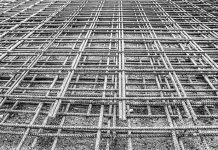
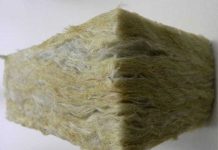
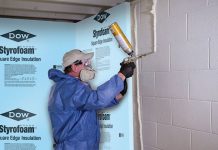
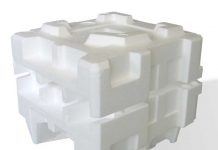
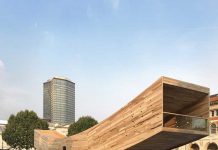
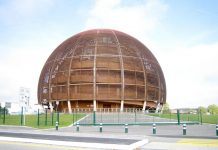











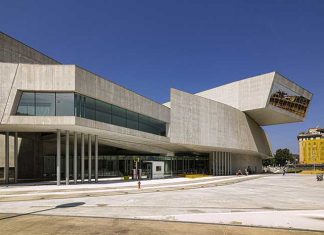
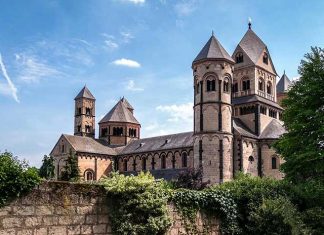
Great article!
I’d also like to highlight the significance of steel. It’s not only durable but can enhance a building’s energy efficiency. For instance, using steel in structures like thermally broken windows reduces air leaks, leading to less heat loss and lower energy consumption for heating. It’s a smart choice for both strength and sustainability in construction.